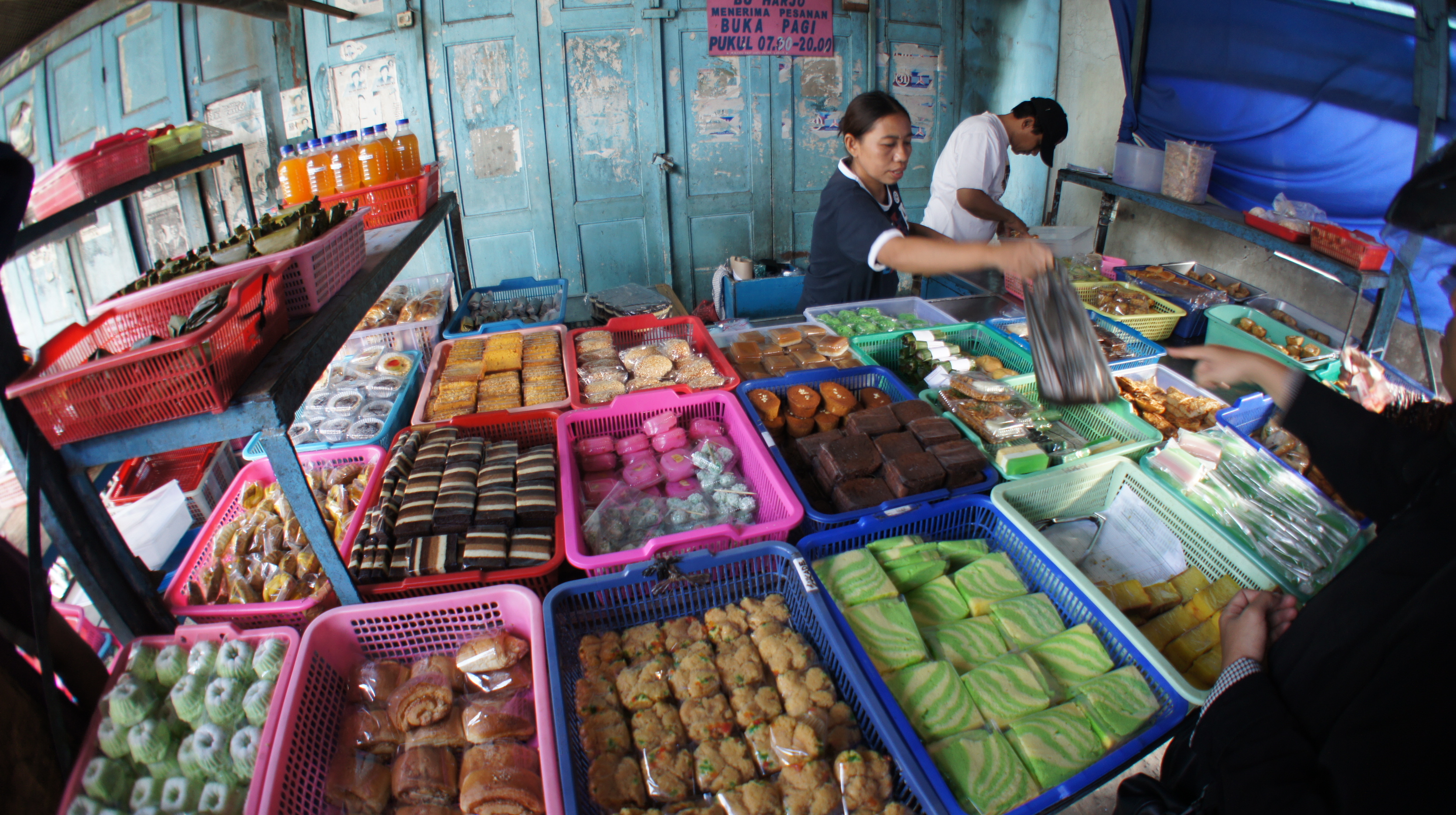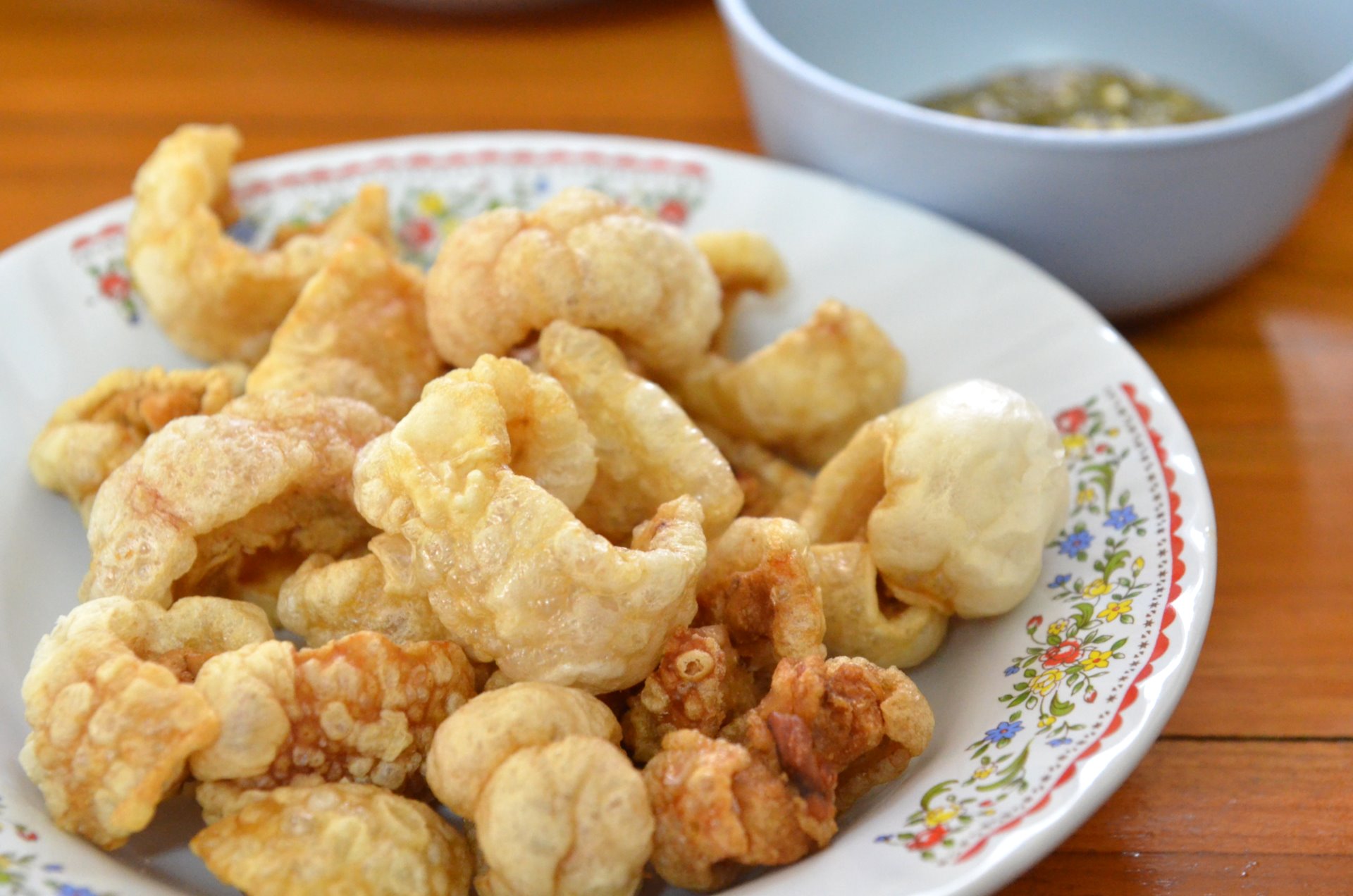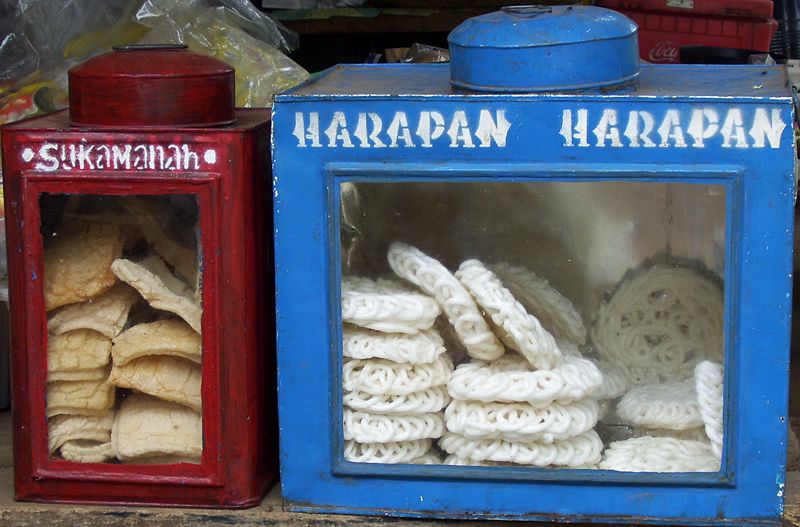|
List Of Indonesian Snacks
This is list of Indonesian snacks. In Indonesian, snacks are called ''kudapan'', ''makanan kecil'' (lit. "small food") or ''makanan ringan'' (lit. "light food"). They might taste savoury or sweet, snack foods are a significant aspect of Indonesian cuisine which is very diverse. Traditional kue snacks — a collection of steamed or fried snacks with rice-flour and coconut sugar-based ingredients, exist in many forms. While traditional crackers of krupuk and kripik chips were also a popular crispy choice. Crackers, chips and crisps Fritters Dumplings Savoury snacks Tofu-based snacks ''Kue basah'' or traditional cakes ''Kue kering'' or cookies and biscuits Pastry, bread and cake Liquid snacks, porridges and beverages Seeds, beans and peanuts See also *Cuisine of Indonesia *Kue *List of Indonesian beverages * List of Indonesian desserts * List of Indonesian dishes *List of Indonesian soups *List of snack foods * List of snack foods by country *Street fo ... [...More Info...] [...Related Items...] OR: [Wikipedia] [Google] [Baidu] |
Kue Basah Yogyakarta
Kue is an Indonesian bite-sized snack or dessert food. Kue is a fairly broad term in Indonesian to describe a wide variety of snacks including cakes, cookies, fritters, pies, scones, and patisserie. Kue are made from a variety of ingredients in various forms; some are steamed, fried or baked. Kue are popular snacks in Indonesia, which has the largest variety of kue. Because of the countries' historical colonial ties, ''Koeé'' (kue) is also popular in the Netherlands. Indonesian kue demonstrate local native delicacies, Chinese and Indian influences, as well as European cake and pastry influences. For example, bakpia and kue ku are of Chinese Peranakan origin, kue putu is derived from Indian puttu, while kue bugis, klepon, nagasari, getuk, lupis and wajik are of native origin; on the other hand, lapis legit, kue cubit, kastengel, risoles and pastel are European influenced. In Java, traditional kue is categorized under ''jajan pasar'' (lit: "market buys" or "market mun ... [...More Info...] [...Related Items...] OR: [Wikipedia] [Google] [Baidu] |
Kemplang
''Kemplang'' is an Indonesian traditional savory fish cracker (''krupuk ikan'') snack commonly found in southern parts of Sumatra, Indonesia. Kemplang crackers are commonly made of ''ikan tenggiri'' (wahoo) or any type of Spanish mackerel, mixed with tapioca starch and other flavorings, sun-dried and then grilled or fried. The shape of a kemplang is similar to Japanese senbei cracker. It is flat and round with whitish color, sometimes with dark burnt acquired from grilling process. Kemplang is usually consumed with a sour and spicy sambal chili paste. History The name ''kemplang'' derived from local Palembang language which means "to hit" to refer the process of flattening the krupuk dough. Kemplang was developed in coastal town in southern parts of Sumatra which traditionally includes South Sumatra, Bangka Belitung and Lampung provinces. In Palembang, kemplang home industry is often linked to pempek industry, as both uses almost identical ingredients; wahoo fish and tapioc ... [...More Info...] [...Related Items...] OR: [Wikipedia] [Google] [Baidu] |
Krupuk Kulit
Krupuk kulit ( jv, rambak or min, karupuak jangek, lit: "skin crackers") is a traditional Indonesian cattle skin ''krupuk'' (cracker). Traditionally it is made from the soft inner skin of cattle (cow or water buffalo), diced, and sun-dried until it hardens and loses most of its water content. The diced and dried skin are later fried in ample hot cooking oil until they expand in similar fashion with bubble and yield a crispy texture. This fried cattle skin is then sealed in vacuum plastic bags to ensure and prolong its crispiness. History ''Krupuk rambak'' or krupuk made from cow or buffalo skin, is the oldest-mentioned krupuk variant in ancient Java. According to a culinary historian, krupuk has been around in Java since the 9th or 10th century, written on the Batu Pura inscription as ''krupuk rambak,'' which still exists today in Javanese cuisine, usually in ''krechek'', a spicy stew. Serving Krupuk kulit is often served as a crispy snack to accompany main meals. In Padang re ... [...More Info...] [...Related Items...] OR: [Wikipedia] [Google] [Baidu] |
Pork Rind
Pork rind is the culinary term for the skin of a pig. It can be used in many different ways. It can be rendered, fried in fat, baked, or roasted to produce a kind of pork cracklings (US) or scratchings (UK); these are served in small pieces as a snack or side dish. The frying renders much of the fat, making it much smaller. Snack Often a byproduct of the rendering of lard, it is also a way of making even the tough skin of a pig edible. In many ancient cultures, animal fats were the only way of obtaining oil for cooking and they were common in many people's diets until the industrial revolution made vegetable oils more common and more affordable. Microwaveable pork rinds are sold in bags that resemble microwaveable popcorn and can be eaten still warm. Pickled pork rinds, though, are often enjoyed refrigerated and cold. Unlike the crisp and fluffy texture of fried pork rinds, pickled pork rinds are very rich and buttery, much like ''foie gras''. Preparation For the la ... [...More Info...] [...Related Items...] OR: [Wikipedia] [Google] [Baidu] |
Kerupuk Putih
''Krupuk'' ( Javanese), ''kerupuk'' (Indonesian), ''keropok'' (Malay), ''kroepoek'' (Dutch) or ''kropek'' ( Tagalog) is a cracker made from starch or animal skin and other ingredients that serve as flavouring. Most krupuk are deep fried, while some others are grilled or hot sand fried. They are a popular snack in maritime Southeast Asia (Indonesia, Singapore, Malaysia, Brunei, and Philippines), and is most closely associated with the culinary traditions of Indonesia, in particular Javanese cuisine. It is an ubiquitous staple in its country of origin, and has spread to other countries either via the migration of diaspora populations or exports. Etymology ''Krupuk'' in Javanese means "fried side dish" (made of flour, mixed with other ingredients). The word was later absorbed to other languages and stylesized according to local pronunciations. In Indonesia and the modern states of Brunei, Malaysia, Singapore, and the Philippines, it appears under a general name with minor p ... [...More Info...] [...Related Items...] OR: [Wikipedia] [Google] [Baidu] |
Kerupuk
''Krupuk'' ( Javanese), ''kerupuk'' (Indonesian), ''keropok'' (Malay), ''kroepoek'' (Dutch) or ''kropek'' ( Tagalog) is a cracker made from starch or animal skin and other ingredients that serve as flavouring. Most krupuk are deep fried, while some others are grilled or hot sand fried. They are a popular snack in maritime Southeast Asia (Indonesia, Singapore, Malaysia, Brunei, and Philippines), and is most closely associated with the culinary traditions of Indonesia, in particular Javanese cuisine. It is an ubiquitous staple in its country of origin, and has spread to other countries either via the migration of diaspora populations or exports. Etymology ''Krupuk'' in Javanese means "fried side dish" (made of flour, mixed with other ingredients). The word was later absorbed to other languages and stylesized according to local pronunciations. In Indonesia and the modern states of Brunei, Malaysia, Singapore, and the Philippines, it appears under a general name with minor ... [...More Info...] [...Related Items...] OR: [Wikipedia] [Google] [Baidu] |
Sea Cucumber As Food
Sea cucumbers are marine animals of the class Holothuroidea. They can be used as food, in fresh or dried form, in various cuisines. In some cultural contexts the sea cucumber is thought to have medicinal value. The creature and the food product are commonly known as ''bêche-de-mer'' in French, from Portuguese ''bicho do mar'' (literally "sea animal"), ''trepang'' (or ''trīpang'') in Indonesian, ''namako'' in Japanese, ''balatan'' in Tagalog, ''loli'' in Hawaiian and ''deniz patlıcanı'' (sea eggplant) in Turkish. In Malay, it is known as the '' gamat''.Alessandro Lovatelli, C. Conand, Food and Agriculture Organization of the United Nations. ''Advances in sea cucumber aquaculture and management'': ''Volume 463 of FAO fisheries technical paper'' United Nations Food & Agriculture Org., 2004. . 425 pages: 58 Most cultures in East and Southeast Asia regard sea cucumbers as a delicacy. A number of dishes are made with sea cucumber, and in most dishes it has a slippery texture. C ... [...More Info...] [...Related Items...] OR: [Wikipedia] [Google] [Baidu] |
Keripik Teripang 2
''Kripik'' or ''keripik'' are Indonesian chips or crisps, bite-size snack crackers that can be savoury or sweet. They are made from various dried fruits, tubers, vegetables, and fish that have undergone a deep frying process in hot vegetable oil. They can be lightly seasoned with salt, or spiced with chili powder and sugar. Together with ''krupuk'', the etymology of the term ''kripik'' is believed as an onomatopoeia in Indonesian to describe the crunch sound of this crispy snack. ''Kripik'' (chips) and ''krupuk'' (crackers) are an integral part of Indonesian cuisine. ''Kripik'' commonly are made from dried slices of roots and tubers. The most popular are '' kripik singkong'' (cassava crackers) and ''kripik pisang'' (Banana chips); other types of fruit, yam or tuber crackers are also available. Kripik and krupuk ''Kripik'' is closely related to ''krupuk'' since it is popularly considered as a smaller sized ''krupuk''. In Indonesia, the term ''krupuk'' refers to a type of relati ... [...More Info...] [...Related Items...] OR: [Wikipedia] [Google] [Baidu] |
Banana Chip
Banana chips (sometimes called banana crisps) are deep-fried or dried, generally crispy slices of bananas. They are usually made from firmer, starchier banana varieties ("cooking bananas" or Plantain (cooking), plantains) like the saba banana, Saba and Changalikodan, Nendran cultivars. They can be sweet or savory, and can be covered with sugar, honey, salt, or various spices. Banana chips are the only processed banana product with significant international trade. The main exporter of banana chips worldwide is the Philippines. Export markets for banana chips are also established in Thailand and Indonesia. Fried Fried banana chips are usually produced from under-ripe banana slices deep frying, deep-fried in sunflower oil or coconut oil. These chips are dry (like potato chips), contain about 4% water (table), and can be salted, spiced, sugar coated or jaggery coated. Sometimes Isoamyl acetate, banana flavoring is added. If ripe dessert bananas are used, they come out soggy. They a ... [...More Info...] [...Related Items...] OR: [Wikipedia] [Google] [Baidu] |
Keripik Pisang Lampung
''Kripik'' or ''keripik'' are Indonesian chips or crisps, bite-size snack crackers that can be savoury or sweet. They are made from various dried fruits, tubers, vegetables, and fish that have undergone a deep frying process in hot vegetable oil. They can be lightly seasoned with salt, or spiced with chili powder and sugar. Together with ''krupuk'', the etymology of the term ''kripik'' is believed as an onomatopoeia in Indonesian to describe the crunch sound of this crispy snack. ''Kripik'' (chips) and ''krupuk'' (crackers) are an integral part of Indonesian cuisine. ''Kripik'' commonly are made from dried slices of roots and tubers. The most popular are '' kripik singkong'' (cassava crackers) and ''kripik pisang'' (Banana chips); other types of fruit, yam or tuber crackers are also available. Kripik and krupuk ''Kripik'' is closely related to ''krupuk'' since it is popularly considered as a smaller sized ''krupuk''. In Indonesia, the term ''krupuk'' refers to a type of relati ... [...More Info...] [...Related Items...] OR: [Wikipedia] [Google] [Baidu] |
Keripik Pisang
Banana chips (sometimes called banana crisps) are deep-fried or dried, generally crispy slices of bananas. They are usually made from firmer, starchier banana varieties (" cooking bananas" or plantains) like the Saba and Nendran cultivars. They can be sweet or savory, and can be covered with sugar, honey, salt, or various spices. Banana chips are the only processed banana product with significant international trade. The main exporter of banana chips worldwide is the Philippines. Export markets for banana chips are also established in Thailand and Indonesia. Fried Fried banana chips are usually produced from under-ripe banana slices deep-fried in sunflower oil or coconut oil. These chips are dry (like potato chips), contain about 4% water (table), and can be salted, spiced, sugar coated or jaggery coated. Sometimes banana flavoring is added. If ripe dessert bananas are used, they come out soggy. They are used for desserts, not for dry chips. Dried Some varieties of banan ... [...More Info...] [...Related Items...] OR: [Wikipedia] [Google] [Baidu] |






